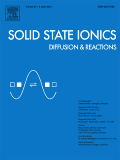
SOLID STATE IONICS
Scope & Guideline
Connecting researchers to the world of solid state ionics.
Introduction
Aims and Scopes
- Ionic Conductivity in Solid Electrolytes:
Research on the ionic conduction mechanisms in various solid electrolytes, including garnet-type, NASICON, and perovskite structures, is a core focus of the journal. This includes studies on defect chemistry, doping strategies, and phase stability. - Electrode Materials for Energy Storage:
The journal publishes significant findings on electrode materials for lithium-ion, sodium-ion, and other battery technologies. This includes investigations into the electrochemical performance, stability, and cycling behavior of novel electrode compositions. - Solid Oxide Fuel Cells (SOFCs) and Electrolysis:
Research related to solid oxide fuel cells and electrolysis is prominently featured, focusing on cathode and anode materials, electrolyte interfaces, and performance optimization under various operational conditions. - Polymer Electrolytes and Composites:
The development and characterization of polymer-based electrolytes and composites for applications in batteries and fuel cells are essential themes. This includes studies on structural properties, ionic conductivity, and mechanical stability. - Computational and Theoretical Studies:
Computational modeling and first-principles studies are utilized to understand ion transport mechanisms, defect formation, and material properties at the atomic level, providing insights that guide experimental research.
Trending and Emerging
- Solid-State Batteries with High Ionic Conductivity:
There is a growing emphasis on solid-state batteries, particularly those utilizing sulfide electrolytes and composite structures that demonstrate high ionic conductivity and safety advantages over liquid electrolytes. - Advanced Doping Strategies:
Research into advanced doping strategies to enhance the ionic conductivity of solid electrolytes has gained traction, with studies focusing on multi-doping and the use of novel dopants to optimize material performance. - In-situ and Operando Studies:
Emerging techniques such as in-situ and operando studies are increasingly utilized to understand the dynamic processes occurring during battery operation, providing deeper insights into material behavior under real conditions. - Environmental Sustainability of Materials:
Research focusing on the environmental impact and sustainability of materials used in energy storage technologies is trending, including the development of recyclable and eco-friendly materials. - Hybrid and Composite Materials:
The use of hybrid and composite materials that combine different functionalities (ionic and electronic conduction) is on the rise, with a focus on improving performance in energy storage and conversion applications.
Declining or Waning
- Traditional Ceramic Electrolytes:
Research on traditional ceramic electrolytes, such as simple perovskites without advanced modifications, appears to be waning as more innovative materials and composites are developed to enhance ionic conductivity and mechanical properties. - Basic Characterization Techniques:
There has been a noticeable decrease in papers focusing solely on basic characterization techniques for materials, such as standard X-ray diffraction or basic impedance spectroscopy, as the field shifts towards more application-oriented and advanced characterization methods. - Single-ion Conductors:
Research on single-ion conductors has diminished, possibly due to the growing interest in mixed ionic-electronic conductors and materials that provide enhanced performance in real-world applications. - Conventional Lithium-Ion Battery Materials:
The focus on conventional lithium-ion battery materials is declining as researchers explore alternative chemistries and materials that offer higher capacities and improved safety profiles.
Similar Journals

Journal of the Korean Electrochemical Society
Pioneering Insights into Electrochemical Processes and MaterialsJournal of the Korean Electrochemical Society (ISSN: 1229-1935, E-ISSN: 1229-1935) stands as a prominent publication in the rapidly evolving field of electrochemistry. Published by the prestigious Korean Electrochemical Society, this journal serves as a vital platform for researchers, professionals, and students eager to disseminate and access cutting-edge studies related to electrochemical processes, materials, and technologies. With an emphasis on promoting innovative research and practical applications, the journal aims to foster collaboration and knowledge exchange within the global electrochemistry community. Although not an open access journal, it provides comprehensive and rigorous peer-reviewed content that ensures the highest scientific quality, making it a valuable resource for anyone involved in the field. Located in Seoul, South Korea, it continues to contribute significantly to the advancement of electrochemical sciences, addressing key challenges and developments that shape the future of technology and environmental sustainability.
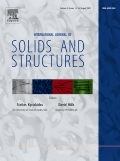
INTERNATIONAL JOURNAL OF SOLIDS AND STRUCTURES
Shaping the Landscape of Mechanical EngineeringINTERNATIONAL JOURNAL OF SOLIDS AND STRUCTURES, published by PERGAMON-ELSEVIER SCIENCE LTD, is a leading academic journal with a strong reputation in the fields of engineering and applied mathematics. Established in 1965 and converging its impact on research through 2024, this journal is highly regarded within Q1 quartile rankings across multiple disciplines, including Applied Mathematics, Condensed Matter Physics, and Mechanical Engineering. With its ISSN 0020-7683 and E-ISSN 1879-2146, the journal is systematically indexed and accessible to a global audience, although it does not currently offer open access options. Researchers, professionals, and students alike benefit from its high-impact research articles, as evidenced by its impressive Scopus rankings in various categories, including a 91st percentile in Applied Mathematics and 81st in Mechanical Engineering. The journal serves as a critical platform for the dissemination of groundbreaking findings in solid and structural mechanics, promoting innovation and collaboration within the scientific community.
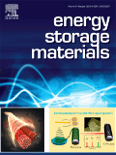
Energy Storage Materials
Elevating knowledge in energy storage and sustainability.Energy Storage Materials, an esteemed journal published by Elsevier, serves as a pivotal platform for the advancement of knowledge in the vital fields of energy engineering, materials science, and sustainability. Established in 2015, it has quickly ascended to the top echelons of academic publishing, boasting an impressive Q1 ranking in categories such as Energy Engineering and Power Technology, Materials Science, and Renewable Energy, Sustainability and the Environment, all as of 2023. The journal's high impact factor underscores its significance and relevance, with Scopus rankings placing it among the elite in its domains. Through a commitment to rigorous peer review and open scientific discourse, Energy Storage Materials aims to foster innovative research and applications that address the global energy challenge. This journal is essential reading for researchers, professionals, and students dedicated to enhancing energy storage technologies and contributing to a sustainable future.

Battery Energy
Connecting Researchers for a Sustainable Tomorrow.Battery Energy is a pioneering open-access journal established by Wiley in 2022, dedicated to the dynamic field of energy storage and battery technologies. With an E-ISSN of 2768-1696, this journal plays a pivotal role in disseminating innovative research and advancements pertinent to the energy sector, including renewable energy solutions and sustainability practices. It holds a respectable position in Scopus rankings, being placed 32nd out of 78 in the Energy category and 130th out of 270 in Renewable Energy, Sustainability, and the Environment, showcasing its growing impact within the academic community. The journal aims to provide an inclusive platform for researchers, professionals, and students to share insights, foster collaboration, and tackle the pressing challenges associated with battery energy storage. By promoting open access, Battery Energy ensures that cutting-edge research is readily available to a global audience, facilitating the continued evolution of battery technologies for a sustainable future.

Journal of Power Sources Advances
Advancing Knowledge for a Sustainable FutureJournal of Power Sources Advances, published by ELSEVIER, stands at the forefront of innovative research within the fields of Electrochemistry, Energy Engineering and Power Technology, and Materials Chemistry. Having established itself as an Open Access journal since 2020, it aims to disseminate knowledge rapidly and widely among researchers, professionals, and students interested in the latest advancements in power sources technology. With an impressive impact factor and recognition as a Q1 journal in 2023 across multiple categories, it addresses key challenges and innovations in energy generation, storage, and materials development. The journal's commitment to high-quality, peer-reviewed content fosters a vibrant community for discussing breakthroughs that hold the potential to transform energy systems globally. The journal operates out of the Netherlands, enhancing its global outreach, while its strong Scopus rankings highlight its influential role in driving research within its scope. Journal of Power Sources Advances is the pivotal resource for those dedicated to shaping the future of energy sustainability and technology.

Energy & Environmental Materials
Leading the Charge in Sustainable Material ScienceEnergy & Environmental Materials, published by WILEY, is an esteemed academic journal dedicated to pioneering research in the multifaceted domains of energy, environmental science, and materials science. Since its inception in 2018, this journal has rapidly established itself as a leading platform, holding a prestigious Q1 ranking across multiple categories including Renewable Energy, Sustainability, and Waste Management, reflecting its significant contributions to advancing knowledge in these critical areas. With a robust Scopus ranking that positions it in the top percentile for Environmental Science and Materials Science, it caters to a diverse audience of researchers, professionals, and students seeking cutting-edge findings and practical applications in energy efficiency and sustainable materials. This open-access journal facilitates the dissemination of innovative research and aims to bridge the gap between scientific exploration and real-world solutions for a sustainable future. The editorial team encourages submissions that explore both theoretical and practical aspects, ensuring that every publication not only contributes to the academic landscape but also drives impactful change in energy and environmental practices.

Journal of Energy Storage
Innovating the future of energy storage technology.Welcome to the Journal of Energy Storage, a premier publication dedicated to advancing the science and technology of energy storage systems. Published by ELSEVIER in the Netherlands, this esteemed journal boasts a significant impact in the field, categorized as Q1 in Electrical and Electronic Engineering, Energy Engineering and Power Technology, and Renewable Energy, Sustainability and the Environment for 2023. With a commitment to disseminating high-quality research, the journal provides a platform for the latest innovations and findings, covering a broad spectrum of topics from battery technologies to thermal energy storage. As a must-read for researchers, professionals, and students alike, the Journal of Energy Storage facilitates vital discussions that shape the future of sustainable energy practices. While presently offering select access options, the journal continues to expand its reach and influence within the academic community, encouraging submissions that drive forward our understanding of energy solutions. Discover the forefront of energy storage research and contribute to a world increasingly reliant on efficient energy management.
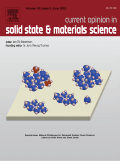
CURRENT OPINION IN SOLID STATE & MATERIALS SCIENCE
Unveiling critical insights in materials research.CURRENT OPINION IN SOLID STATE & MATERIALS SCIENCE, published by Pergamon-Elsevier Science Ltd, is a premier journal in the field of materials science that offers critical insights into the latest advancements and trends in solid-state materials. With an impressive impact factor and a 2023 ranking in the top quartile (Q1) for materials science, this journal provides a platform for researchers, professionals, and students to explore and disseminate high-quality research findings. The journal covers a broad range of topics, encouraging interdisciplinary dialogue among scientists and engineers. While currently not available as open access, its rigorous selection process ensures that only the most impactful and relevant studies are published. Since its inception, CURRENT OPINION IN SOLID STATE & MATERIALS SCIENCE has established itself as an essential resource for anyone involved in the field, facilitating the rapid exchange of knowledge that is vital for advancing material innovations.

JOURNAL OF THE ELECTROCHEMICAL SOCIETY
Fostering Collaborative Progress in Electrochemical ScienceJOURNAL OF THE ELECTROCHEMICAL SOCIETY, published by the ELECTROCHEMICAL SOCIETY INC, is a leading peer-reviewed academic journal dedicated to advancing the field of electrochemistry and its myriad applications. With an ISSN of 0013-4651 and E-ISSN of 1945-7111, this esteemed journal has been a pivotal platform for research since its inception in 1948, with convergence periods allowing for a rich historical context of study through to 2024. Recognized for its high impact, it holds a noteworthy Q1 ranking in several categories including Condensed Matter Physics and Materials Chemistry, and it is Q2 ranked in both Electrochemistry and Renewable Energy. This journal features a range of articles that encompass both theoretical and experimental advancements, making it a crucial resource for researchers, professionals, and students keen on exploring cutting-edge developments in materials science, energy solutions, and sustainable technologies. Although it is not an open access journal, its rigorous standards ensure that published work significantly contributes to the body of knowledge within its fields, fostering innovative research and collaborative progress.
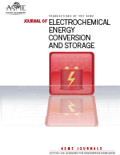
Journal of Electrochemical Energy Conversion and Storage
Innovating Electrochemical FrontiersThe Journal of Electrochemical Energy Conversion and Storage, published by ASME, is a premier platform for cutting-edge research in the fields of electrochemistry, energy engineering, and materials science. With an ISSN of 2381-6872 and an E-ISSN of 2381-6910, this journal aims to disseminate high-quality articles that contribute to the understanding and application of energy conversion and storage technologies. Notably recognized in the 2023 Category Quartiles as Q2 in multiple categories including Electronic, Optical and Magnetic Materials, Energy Engineering and Power Technology, and Mechanical Engineering, it reflects a strong academic impact within its field. The journal also boasts competitive Scopus rankings, highlighting its relevance and influence across disciplines. Operating under an open access model, the journal ensures that research findings are widely accessible, fostering collaboration and innovation among researchers, professionals, and students globally. As we move toward a more sustainable future, the Journal of Electrochemical Energy Conversion and Storage plays a critical role in advancing technologies that promise to reshape how we harness and utilize energy.